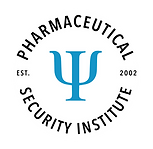Measuring Pharma Crime

To understand PSI's data collection and analytical methodologies, it is necessary to begin with a definition of terms. PSI recognizes that many of these terms have an official, specific definition developed by either regulatory authorities or legislative bodies in many countries throughout the world. However, in other countries, there are no official definitions of these terms. To remedy this situation, PSI has developed definitions that it utilizes to describe the general problem of pharmaceutical crime. Since developing its collection and reporting systems in 2002, there has been no change to these definitions. The relevant definitions follow.
Counterfeit Medicine
PSI's definition of counterfeit medicines is built upon the definition utilized by the World Health Organization (WHO). Counterfeit medicines are products deliberately and fraudulently produced and/or mislabeled with respect to identity and/or source to make it appear to be a genuine product. This definition applies to both branded and generic products.
Counterfeit products appear with a wide range of deficiencies. For example, counterfeit medicines have been found to contain less than or more than the required amount of active pharmaceutical ingredients (API) used in the authentic version or even contain the correct amount of API but have been manufactured in unsanitary, unsafe conditions.
Genuine medicines can also be counterfeited. For example, cases have been discovered where genuine medicines have been placed in counterfeited packaging to extend the expiry date or to commit a fraud against various government programs.
Illegal Diversion
Illegal diversion occurs when a genuine pharmaceutical product is approved and intended for sale in one country, but is then illegally intercepted and sold in another country. These schemes are often accomplished through the use of false statements or declarations. At times, drug regulators in the second country have not approved the use of the diverted drug.
Illegal diversion may also occur within the same geographic area, within the same country or city. This type involves diverting discounted medicines from one intended group of consumers to another group buying medicines in an unregulated open market. For example, in Latin America, illegal diversion occurs when a government purchases drugs at discounted prices for use in state hospitals and these drugs are diverted to open air or "street" markets.
Theft
Pharmaceutical theft is defined as an illegal taking of medicines. Thefts include burglary, robbery, or an embezzlement of goods. The responsible individuals may be insiders such as employees, or outsiders such as professional thieves. The theft may occur anywhere in the distribution chain such as at the site of manufacture, freight forwarder, distribution centers, warehouses, pharmacies, or hospitals.
PSI data focuses mainly on major thefts, those greater than USD $100,000 in value, and those thefts that involve large criminal networks and/or schemes. Small scale street thefts or pharmacy robberies are generally not included in the data that PSI collects.
Incident
An incident is a discrete event triggered by the discovery of counterfeit, illegally diverted or stolen pharmaceuticals. PSI considers an incident to be a unique occurrence. It must have adequate factual information such as a particular date, time, place and type of pharmaceutical product involved in order for it to be considered a unique incident. Once confirmed, an incident is assigned a tracking number. All incoming reports are reviewed to determine if they are related to an earlier incident indicating ongoing criminal activity.
Incidents vary by magnitude, scale and timeframe. Magnitude refers to the quantity of counterfeit medicines found. For example, an incident may involve small quantities of a single product. Conversely, an incident may involve hundreds of thousands of counterfeit pharmaceuticals representing multiple products.
Scale refers to the size of the organization involved. For example, incidents may involve a single provider who may be responsible for the distribution of thousands of counterfeit drugs. Alternatively, an incident may involve a group of organized criminals who fill thousands of orders with hundreds of thousands of counterfeit drugs placed on the Internet.
Lastly, incidents can vary by timeframe. By way of illustration, an inspector from a drug regulatory authority may find counterfeit drugs on one particular day during an inspection. This would be viewed as one incident. But other incidents may occur over an extended period of time. For example, there have been investigations which disclosed groups of organized counterfeiters who for years trafficked in counterfeit drugs. Despite the fact that they operated for years, this situation would also be recorded as a single incident dating from the first time a counterfeit drug was verified.
An incident may be reported by anyone - including drug inspectors, customs officials, police officers, or the general public. The discovery of illegally diverted or counterfeit pharmaceuticals may be the result of government or industry market surveillance. Also, it could be the result of a law enforcement seizure, such as a customs seizure or police raid.
Counterfeiting Incident System (CIS)
The PSI Counterfeiting Incident System (CIS) is used to record incidents of counterfeiting, theft and illegal diversion of pharmaceutical products worldwide. CIS incidents come from a variety of sources, including open media reports, PSI member company submissions, and public-private sector partnerships.
